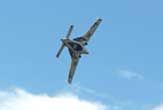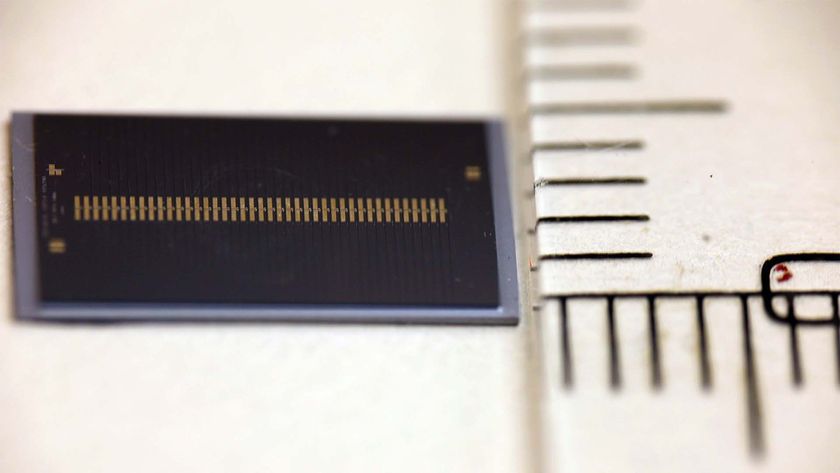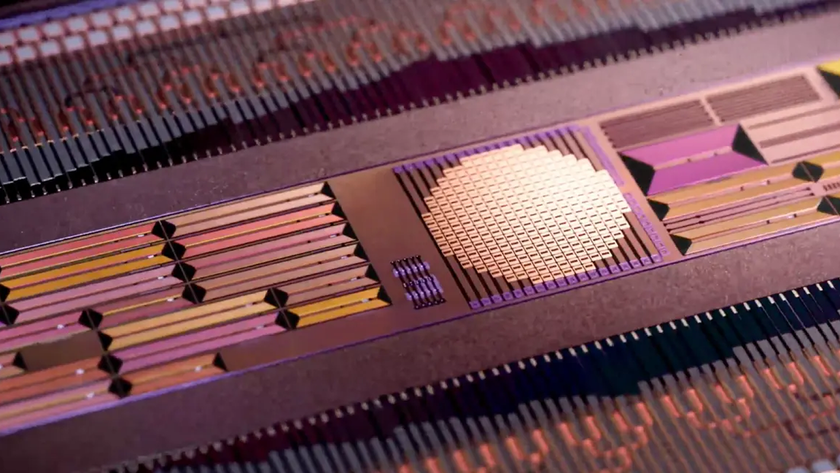'Rocket Racing' to Feature Video Game-Like Interactivity

The soon-to-launch Rocket Racing League recently debuted elements of its innovative, video game-like, 3-D virtual racetrack in the sky. Real-life pilots will zoom through virtual "gates" and other simulated raceway structures that audiences will see recreated on Jumbotrons and computer screens.
When fully developed, this style of "augmented reality" game play that enhances the physical world with computer-generated graphics could expand technological frontiers in sports and in everyday life.
Rather than virtual add-ons just for television viewers – a well-established practice in sports broadcasting from pitch placements in baseball to world record-pace lines added to Olympic swim lanes – the graphics in the Rocket Racing League will be integral to the action.
In this way, the Rocket Racing League "is melding high-end dynamic video games with the real world," said Michael D'Angelo, the league's chief operations officer.
The plan, in essence, is to take football's yellow "first down" line – another classic example of augmented reality – pump it up on steroids, and make it so that "players and the fans will be able to see it," D'Angelo said.
From inside the helmet to you
At the QuickTrip Air & Rocket Racing Show in Tulsa, Okla. on Saturday, the Rocket Racing League showed off its new-and-improved Mark III X-racer and flew a special Cessna 402B plane that demoed some of the augmented reality package under development.
Sign up for the Live Science daily newsletter now
Get the world’s most fascinating discoveries delivered straight to your inbox.
To see the virtual racetrack that they will be flying through, pilots will wear custom Targo Racer helmets made by Israel-based defense electronics company Elbit Systems Ltd., which until now have only been used for military purposes.
Within the Targo Racer helmet, a projector beams graphics and data onto a rather ordinary-looking, transparent safety visor that goes across the pilot's eyes.
These graphics show the pilot where to fly via colored gates and boundary markers, plus give real-time data on aircraft altitude, attitude, speed and the status of other racers.
By combining Global Positioning System coordinates for the aircraft with line-of-sight sensors, the system intuitively "knows" how to accurately render the computer-generated racetrack and other visual elements based on the pilot's gaze.
"Once we know where the pilot's head is looking, we can generate into the helmet display all of the portion of the virtual track that we need in real space," said Yaron Kranz, senior director of business development and research and development for helmet mounted systems at Elbit.
Other key aspects of the graphical technology come from the Maryland Advanced Development Laboratory and Orad, the pioneers of football's famous first-down line and prominent makers of on-screen graphics for everything from sporting events to elections.
"The augmented reality is very streamlined for the purpose of the pilot," D'Angelo told TechNewsDaily. "It doesn’t need to look pretty and have a 'wow' factor . . . it needs to provide the pilot with navigation aids and safety cues and race metrics to allow him to better compete."
Visual fireworks
Spectators, however, should be in for a visual treat because plenty of audience-only, computer-generated eye candy will be layered on top of the in-race skyscapes created from video feeds from the cockpit cam and air-and-ground cameras.
For example, as shown in Tulsa, when a rocket racer successfully flies through a virtual gate, D'Angelo said a "beautiful cascade of fireworks" might light up screens showing the event, including on-site Jumbotrons to television sets and mobile devices.
These synthetic elements will be richly textured in 3-D to reflect light and viewing angles, appearing much like video-game graphics except that the racers (and the contest itself) are real.
Synchronizing the spatial dimensions of what the pilot sees with the physical location and vector of a roaring X-racer will require some major computer legwork, D'Angelo said.
"The computers are aware of the calibration and of the physics of the cameras being fed into them," he explained, allowing the league's software programs to establish an integrated framework of the space surrounding its X-racers.
Streaming video from these rockets while they bust aerobatic loops and rolls at up to 300 miles per hour (483 kilometers per hour) to the ground has presented technical challenges of its own, including camera and antenna placement, but for now all signs point to go, D'Angelo said.
Beyond the virtual into everyday life
Ultimately, when it takes off in earnest in late 2011, the Rocket Racing League aims to be an airborne version of NASCAR or Formula 1 racing, and wants its virtual world to be accessible to anyone with a Web browser on a mobile device.
"The plan is to be able to hold an iPhone, for example, up to sky and move it 45 degrees to the right to see that portion of the virtual raceway," D'Angleo said.
A Rocket Racing League app for the iPhone and iPad that comes out in two weeks will also eventually let fans virtually race their own X-racer with those actually zooming through the heavens.
For the Rocket Racing League and other organizations, these journeys into augmented reality could be just a taste of what's to come. Doing away with expensive physical constructions such as stadium billboards and racetracks should open up many possibilities not only for sporting events but in everyday life.
Vehicles, for example, have already begun incorporating augmented reality-based heads-up display technology from military aircraft like those designed by Elbit. Kranz said that versions of the Targo Racer helmet should soon help emergency services helicopter pilots train and fly missions in difficult circumstances.
The dawning of augmented reality advertising – already rolled out in cricket leagues that have ads "mapped" onto the playing field for TV viewers to see – will also likely be part of the Rocket Racing League's quest for interactively entertaining its audience and paying the bills.
With augmented reality, D'Angelo said, "you could have a virtual billboard in the sky or a thousand-foot Coke can for advertising."













